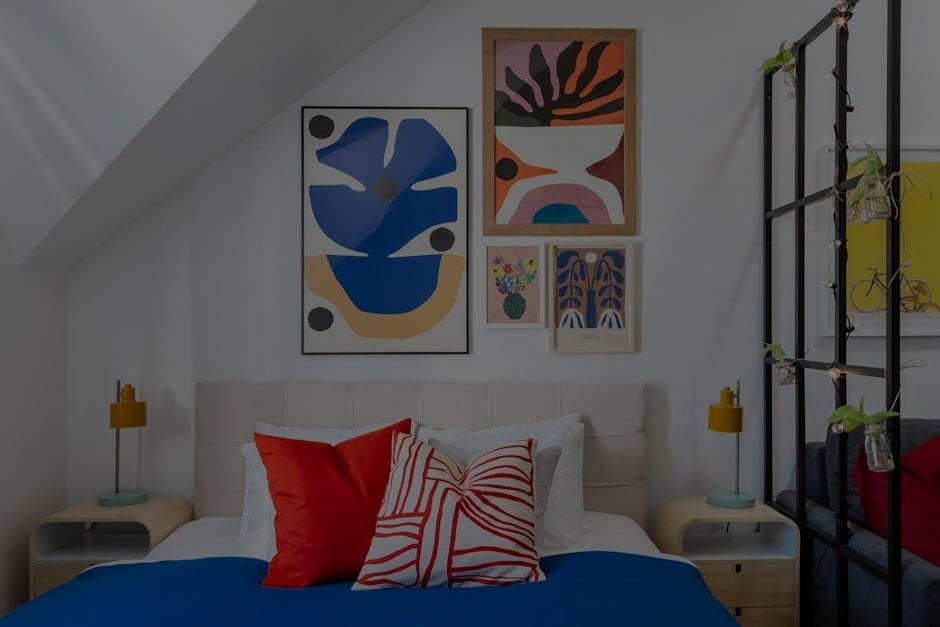**Abstract:**
Transform your living space into a sanctuary with Feng Shui decor ideas tailored for modern interiors. Discover how to harmonize energy flow and enhance well-being in your home.
Understanding Feng Shui: The Basics of Energy Flow
Feng Shui, an ancient Chinese practice, emphasizes the importance of energy, or “chi,” in our environments. By understanding how to harness this energy, you can create a harmonious living space. The principles of Feng Shui focus on the arrangement of furniture, colors, and materials to promote positive energy flow. This practice can transform any modern interior into a serene and balanced home, meeting the psychological needs of individuals seeking peace and tranquility.
Creating Balance: The Five Elements
Incorporating the five elements—wood, fire, earth, metal, and water—is essential in Feng Shui. Each element contributes to a balanced environment. For example, wood promotes growth and vitality, while water symbolizes abundance and flow. Integrating these elements into your decor can create a sense of harmony. Use wooden furniture, metal accents, or water features like fountains to enhance energy in your home. This approach not only beautifies your space but also satisfies the emotional desire for stability and growth.
Color Psychology: Choosing the Right Palette
Colors play a significant role in Feng Shui, influencing mood and energy. Warm tones like red and orange can invigorate a space, while cool colors like blue and green promote calmness. When designing your modern interior, consider the psychological effects of color. For instance, a soft green in the living room can evoke tranquility, making it an ideal choice for relaxation. By thoughtfully selecting colors, you can cater to the emotional needs of your family and guests, ensuring a welcoming atmosphere.
Spatial Arrangement: The Art of Placement
The arrangement of furniture and decor is crucial in Feng Shui. Avoid clutter and ensure that pathways are clear to allow energy to flow freely. Positioning furniture to promote conversation and connection can enhance relationships within the home. For example, a circular seating arrangement in the living room encourages inclusivity and warmth. This strategic placement meets the psychological needs of individuals seeking social interaction and community, making your home a gathering place for friends and family.
Incorporating Nature: Biophilic Design
Bringing nature indoors is a key aspect of modern Feng Shui. Plants not only purify the air but also connect us to the earth, fostering a sense of well-being. Incorporate indoor plants like snake plants or peace lilies to enhance your decor while promoting positive energy. Natural materials such as wood and stone can also create a calming environment. This integration of nature meets the emotional needs of those longing for connection with the natural world, making your home a refuge from the hustle and bustle of daily life.
Personalization: Infusing Your Unique Style
While Feng Shui provides guidelines, personal expression is vital. Incorporate decor items that resonate with you, such as artwork or family heirlooms. This personalization not only enhances the aesthetic appeal of your space but also fulfills the psychological need for identity and belonging. By curating a space that reflects your values and experiences, you create an inviting atmosphere that resonates with both you and your guests.
Conclusion: Crafting Your Dream Home
Designing your dream home with Feng Shui principles allows you to create a space that nurtures both body and mind. By understanding energy flow, incorporating the five elements, and considering color psychology, you can transform your modern interiors into harmonious sanctuaries. Embrace nature and personalize your decor to foster a sense of belonging and well-being. With these Feng Shui decor ideas, you can achieve a balanced and fulfilling living environment, making your home a true reflection of your dreams and aspirations.










